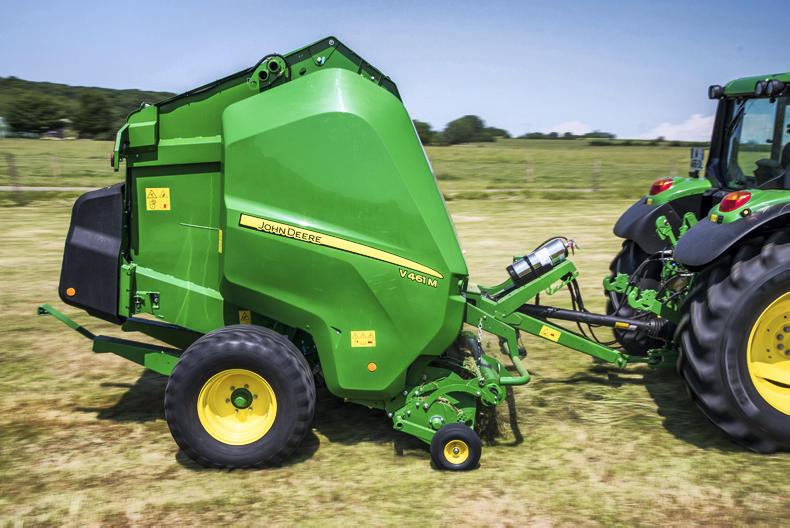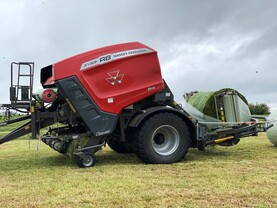John Deere recently announced a number of updates to its variable chamber round baler range for 2018. These changes are designed to allow for more uniform bales in all crops be it hay, grass or straw. According to Michael Baker of John Deere Limited this is also a stronger-built baler due to the extra heavy duty welded frame. The new balers are replacing the existing 800 and 900 series models. The five models in the range are the basic specification V451G designed for hay and straw fitted with a four tine-bar pickup and 5mm tines. The mid-specification V451M and the V461M balers can be fitted with optional five tine-bar pickup and thicker 6mm tines. Lastly, the top two models in the range, the V451R and V461R have been developed as high specification balers to meet the demands of contractors or those with a lot of bales to make. Initially launched on the 900 series of balers in 2012, the fast release system (FRS) is also available allowing for rapid exit of the bale once the flexible rear door is lifted. John Deere claim up to 140 bales per hour are possible when this option is specified on a machine in combination with the high capacity intake rotor.
Opening the large curved side panels of the baler reveals what seems to be a straightforward machine. Thought has been given to reducing the number of corners and ledges to avoid material accumulating during baling. Four chains take drive from the PTO to the pickup, rollers and belts on the machine. The chain oiler is located on the nearside of the machine but automatic greaser is located on the opposite side requiring both side panels to be opened for servicing. The pickup on this machine is fitted with Hardox steel tines and the aforementioned one-piece intake rotor. What this means is there is just one full width auger feeding material into the middle. Unlike a lot of the competition, the adjustable pick-up wheels on these balers do not pivot. The reason given was due to the length of the machine the benefit of pivoting wheels was negligible.
Moving through the machine, one of the main changes was a new bale density tensioning system for the belts. On previous machines one ram tensioned the belts and held the rear door closed. Now, there is a separate arm for tensioning the belts and the rear door is no longer held closed hydraulically. Hooks at either side physically hold the door closed allowing hydraulic pressure to be used for belt tensioning. A neat feature of the door opening and closing mechanism was a shock absorbing system to avoid the door banging when opened or closed.
The six belts in this machine are continuous and smooth, something Michael Baker said was not an issue in wet grass or shiny straw. The reason was that in the chamber are three aggressive rollers for turning the bale from the start. The bottom one is the roller upon which the bale sits during formation and other two help to keep the bale turning.
For those who want to chop the crop, thirteen single sided removable knives can be specified. These knife slots can be filled with blanking plates that are stored on the machine when not in use. In the event of a blockage, there is also a full width drop-floor unplugging system standard on the M and R balers.
Different control boxes are available depending on the model chosen. Net storage and feed-in is at ground level on the rear door. When asked about the option of providing a film replacement option instead of net similar to a well-known Irish manufacturer, John Deere were not too forthcoming.






 This is a subscriber-only article
This is a subscriber-only article














SHARING OPTIONS: